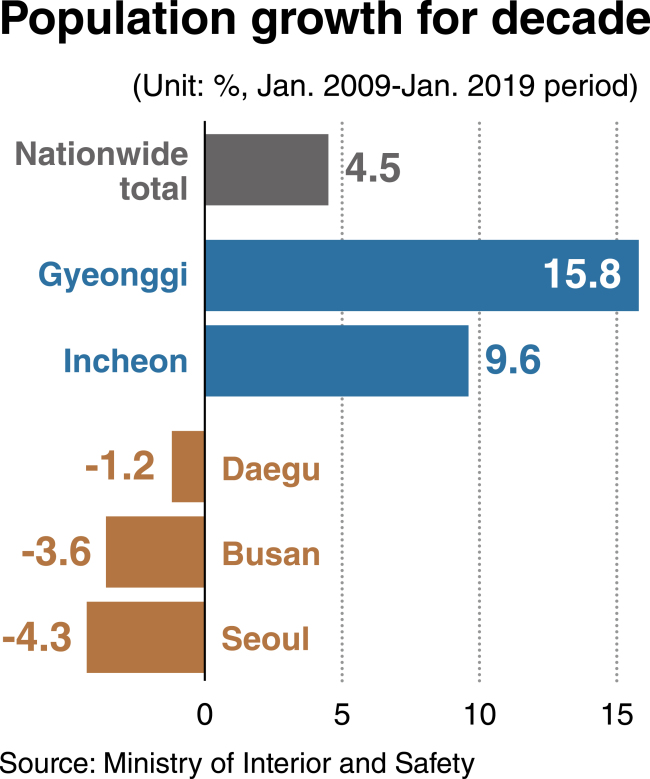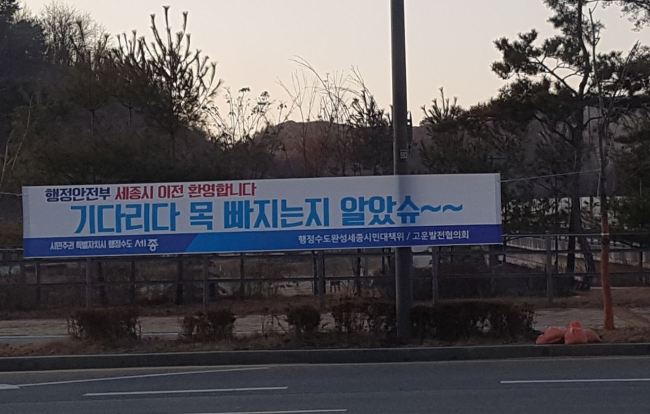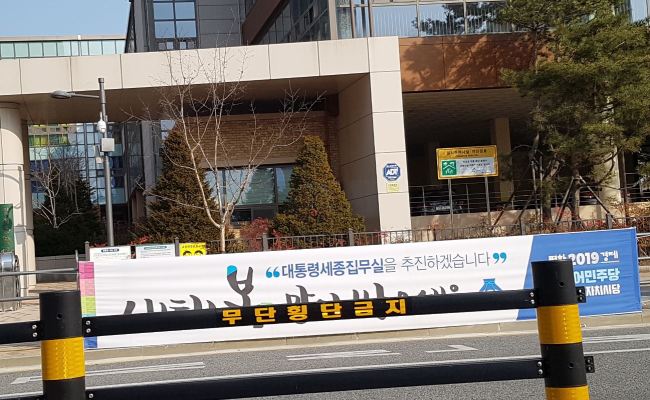[News Focus] 3 in 10 South Koreans reside in Gyeonggi, Incheon
By Kim Yon-sePublished : Feb. 14, 2019 - 14:47
SEJONG -- The number of residents in Gyeonggi Province and Incheon is continuously growing amid high apartment prices in Seoul, which saw its population reduce by about 90,000 on-year -- and 440,000 over the past 10 years -- to 9.76 million as of January.
According to the Ministry of Interior and Safety data, the number of Gyeonggi Province-registered residents came to 13.09 million last month, up 15.8 percent or 1.79 million in a decade from 11.30 million in January 2009.
According to the Ministry of Interior and Safety data, the number of Gyeonggi Province-registered residents came to 13.09 million last month, up 15.8 percent or 1.79 million in a decade from 11.30 million in January 2009.

Suwon City topped the list in Gyeonggi Province with its population of 1.2 million, followed by Goyang with 1.04 million and Yongin with 1.03 million. The figures are comparable to the number of residents in Ulsan, one the nation’s six metropolitan cities, where 1.15 million people were residing last month.
Among other cities in Gyeonggi Province posting a steady increase in population are Seongnam with 953,000, Bucheon with 842,000, Hwaseong with 765,000 and Namyangju with 682,000.
New town Dongtan in Hwaseong City saw its population surge by 67,000 on-year in 2018, Gimpo by 31,000, Yongin by 31,000, Siheung by 29,000 and Seo-gu in Incheon by 22,000.
Incheon is the third-largest city in South Korea with the number of residents standing at 2.95 million. The metropolitan city marked a 9.6 percent increase in a decade from 2.69 million in January 2009.
In contrast, Seoul saw its population decline from 10.2 million to 9.76 million (-4.3 percent) over the corresponding period. The nation’s second-largest city Busan posted a drop from 3.56 million to 3.43 million (-3.6 percent) and fourth-largest Daegu from 2.49 million to 2.46 million (-1.2 percent).
A research analyst in Yeouido, Seoul, cited ministry data, which shows that “30.9 percent of Koreans are residing in Gyeonggi Province or Incheon (16.04 million out of the total 51.82 million).”
“One out of every two lives in the Seoul metropolitan area (Seoul-Gyeonggi Province-Incheon). As we are not like a Nordic country where a large proportion of people gather around a southern-located capital and neighboring districts due to climate conditions, more powerful policies are needed for resident-disperse and balanced development across the country,” he said.

Though the government is pinning hopes on rapidly growing Sejong City, the number of residents in the self-governing city falls behind that of Gyeonggi Province cities. While the population in Sejong posted 316,000 in January, 452,000 were residing in Paju, 425,000 in Gimpo and 326,000 in Gwangmyeong.
Some netizens and regional officials in Sejong are calling for the remaining ministries and state-funded agencies in Seoul and Gwacheon to relocate their offices to the Government Complex Sejong.
Some critics raised the necessity of inducing large-sized private enterprises to Sejong for the real development of South and North Chungcheong provinces.

Meanwhile, the Interior-Safety Ministry data showed that Sejong was the “youngest district” in the nation. The average age of residents was 36.7 years old (36.1 for men and 37.3 for women) as of January, while the nationwide average was 42.1 years.
Seoul residents’ average age was 42.2 years, Gyeonggi Province 40.4, Incheon 41.1, Busan 44, Daegu 42.3 and Daejeon 40.7. South Jeolla Province recorded the eldest of 45.6 years, followed by North Gyeongsang with 45, Gangwon 44.8 and North Jeolla Province with 44.3.
The ratio of males to female residents was the highest in Ulsan at 1.06 (or 106 percent) -- 593,000 to 561,000 -- followed by South Chungcheong Province with 1.04 and North Chungcheong Province with 1.02.
Seoul recorded the lowest sex ratio of 0.96 -- 4.77 million to 4.99 million -- trailed by Busan with 0.97, Daegu and Gwangju with 0.98, and North Jeolla with 0.99. The nationwide average ratio was 0.997, 25.86 million to 25.96 million.
By province, Jeju had the smallest population of 667,000, followed by Gangwon with 1.54 million, North Chungcheong with 1.59 million, North Jeolla with 1.83 million and South Jeolla with 1.87 million.
South Gyeongsang had the second-biggest population of 3.37 million, following Gyeonggi Province. North Gyeongsang was in third place with 2.67 million.
By Kim Yon-se (kys@heraldcorp.com)






![[From the Scene] Monks, Buddhists hail return of remains of Buddhas](http://res.heraldm.com/phpwas/restmb_idxmake.php?idx=644&simg=/content/image/2024/04/19/20240419050617_0.jpg&u=20240419175937)





![[Graphic News] French bulldog most popular breed in US, Maltese most popular in Korea](http://res.heraldm.com/phpwas/restmb_idxmake.php?idx=644&simg=/content/image/2024/04/18/20240418050864_0.gif&u=)


![[From the Scene] Monks, Buddhists hail return of remains of Buddhas](http://res.heraldm.com/phpwas/restmb_idxmake.php?idx=652&simg=/content/image/2024/04/19/20240419050617_0.jpg&u=20240419175937)

![[KH Explains] Hyundai's full hybrid edge to pay off amid slow transition to pure EVs](http://res.heraldm.com/phpwas/restmb_idxmake.php?idx=652&simg=/content/image/2024/04/18/20240418050645_0.jpg&u=20240419100350)

![[Today’s K-pop] Illit drops debut single remix](http://res.heraldm.com/phpwas/restmb_idxmake.php?idx=642&simg=/content/image/2024/04/19/20240419050612_0.jpg&u=)